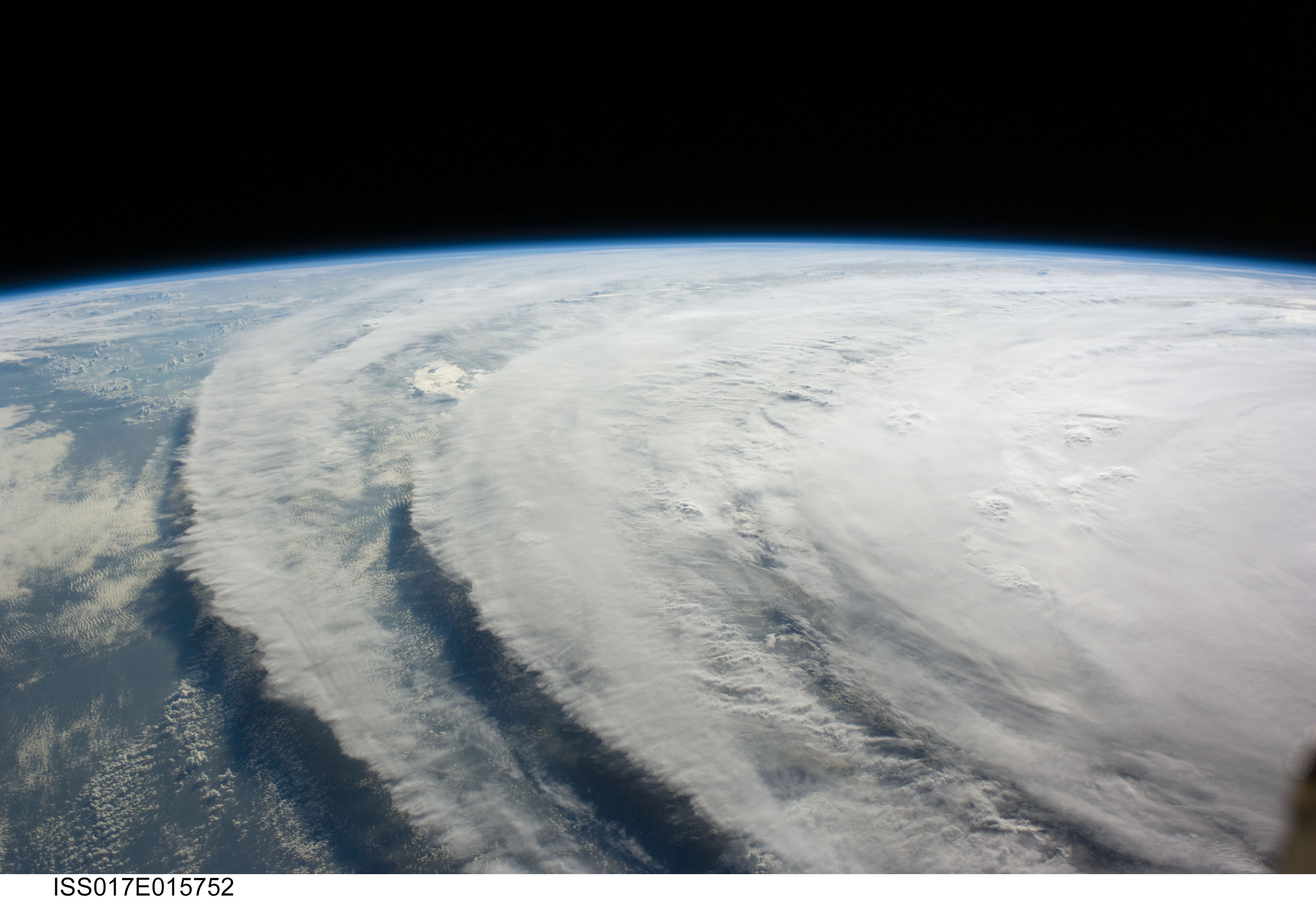What is a hurricane? Well, a hurricane is a tropical cyclone that occurs in the North Atlantic Ocean or the Northeast Pacific Ocean and remains east of the International Dateline. Tropical cyclones are characterized by a large low pressure center and numerous thunderstorms. These produce strong winds and heavy rain. These cyclones feed on heat released when moist air rises causing condensation of the water vapor that is contained in the moist air. These storms are fueled by a different heat mechanism than other cyclonic windstorms(nor’easters, polar lows, and European windstorms). They are classified as a warm core storm system.
All tropical cyclones are areas of low atmospheric pressure. As a matter of fact, the pressures recorded at the center of tropical cyclones are among the lowest that occur at sea level. A hurricane is characterized and driven by the release of large amounts of latent heat of condensation(water vapor condenses as it moves upward). This heat is distributed vertically around the center of the storm, so, except at the surface of water, it is warmer inside the cyclone than it is outside. At the center of the hurricane is an area of sinking air. If this area is strong enough, it can develop into a large eye. Weather in the eye is normally calm and free of clouds, but the surface of the sea may be tossing violently. The eye is normally circular in shape, and may range in size from 3 km to 370 km in diameter.
While a tropical cyclone’s primary energy source is the release of the heat of condensation, solar heating is the initial source of that evaporation. An initial warm core system(an organized thunderstorm complex) is necessary for the formation of a tropical cyclone, but a large flux of energy is needed to lower atmospheric pressure. The influx of warmth and moisture from the underlying ocean surface is critical for tropical cyclone strengthening and most of it comes from the lower 1 km of the atmosphere. Condensation leads to higher wind speeds. These faster winds and the lower pressure associated with them cause an increase in surface evaporation and more condensation. This positive feedback system continues and feeds the hurricane until the conditions for hurricane formation are gone. The rotation of Earth causes the system to spin,(the Coriolis effect) which gives it a cyclonic appearance and affects its trajectory.
Tropical cyclones are distinguished by the deep convection that fuels them. Since convection is strongest in the tropics it defines the initial domain of the tropical cyclone. To continue to feed itself a tropical cyclone must remain over warm water. When a tropical cyclone passes over land, it is cut off from its heat source and its strength diminishes rapidly. The passage of a tropical cyclone over the ocean can cause the upper layers of the ocean to cool substantially, which can influence subsequent cyclone development. Scientists at the National Center for Atmospheric Research in the US estimate that a tropical cyclone releases heat energy equal to 70 times the world energy consumption, 200 times the worldwide electrical generating capacity, or the same as exploding a 10 megaton nuclear bomb every 20 minutes.
Well, there you have the answer to what is a hurricane. It is a tropical nightmare, but if humans could somehow harness that energy we would never need fossil fuels again.
We have written many articles about hurricanes for Universe Today. Here’s an article about human influences generating more hurricanes, and here’s a NASA video of Hurricane Bill.
If you’d like more info on hurricanes, check out Visible Earth Homepage. And here’s a link to NASA’s Earth Observatory.
We’ve also recorded an episode of Astronomy Cast all about planet Earth. Listen here, Episode 51: Earth.

